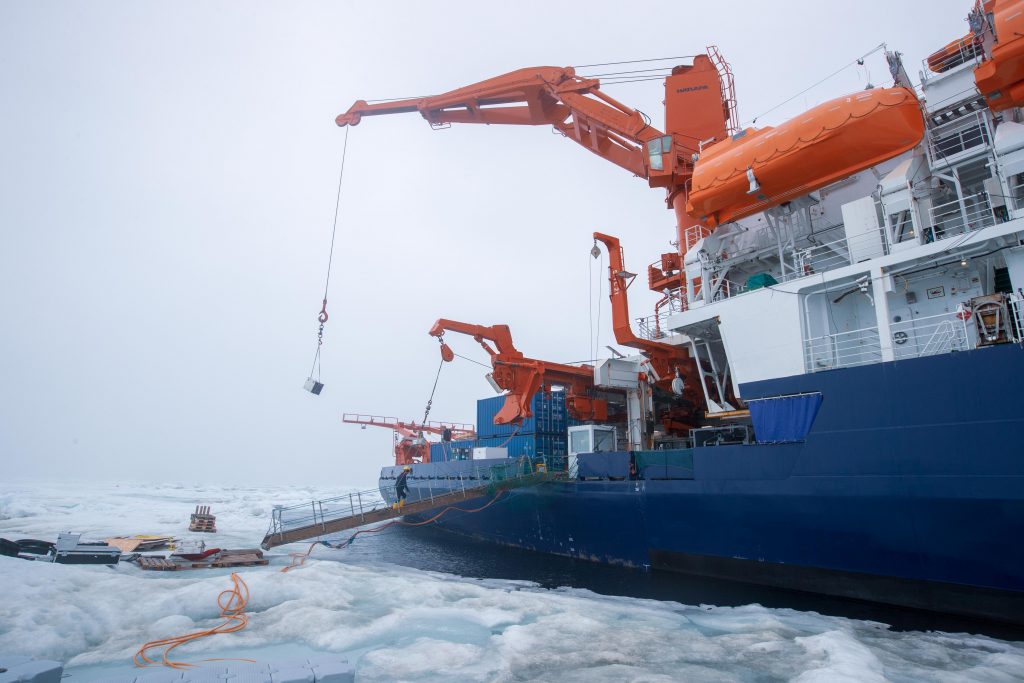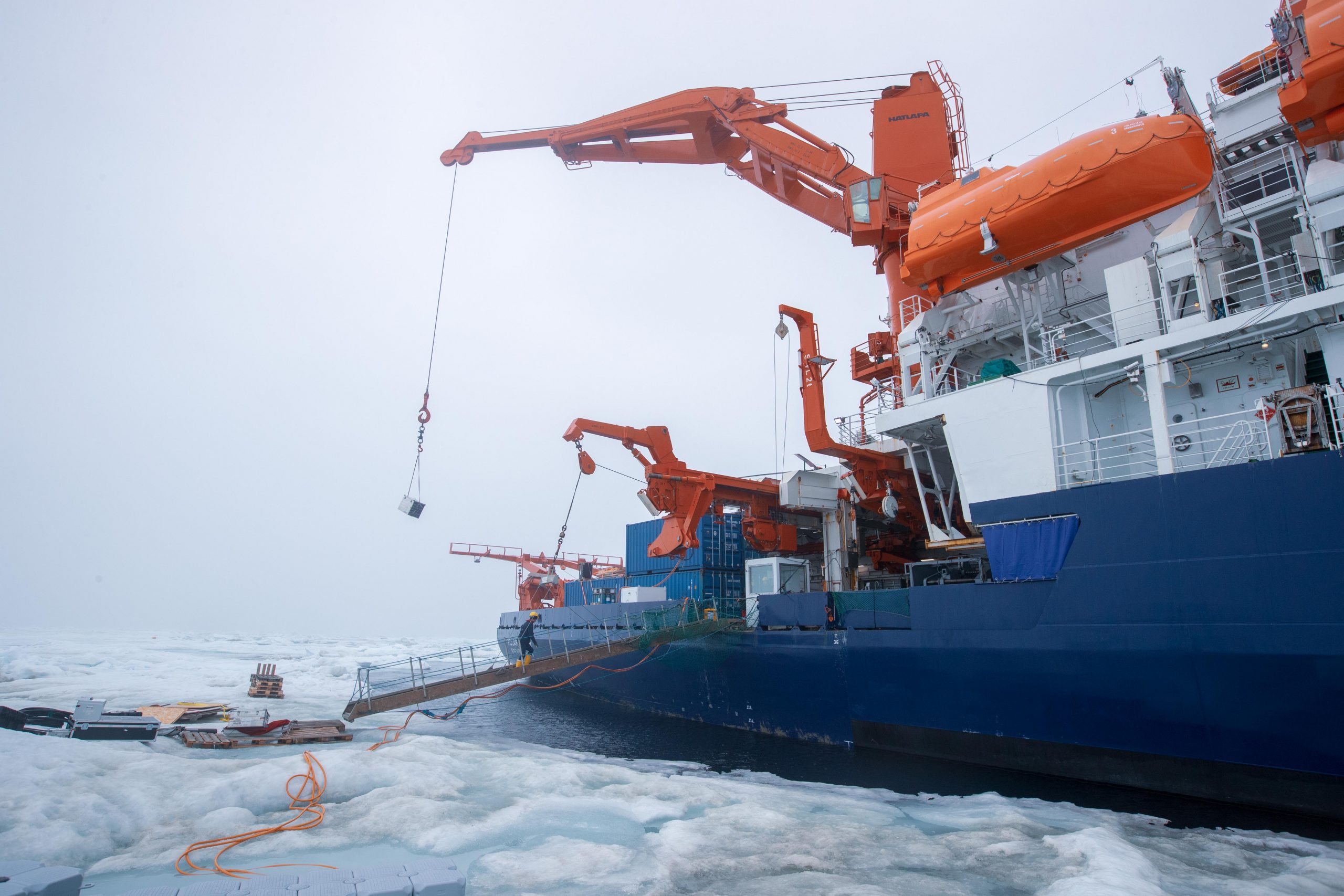by Matthew Shupe, CIRES/NOAA scientist and co-coordinator of MOSAiC
With still some days until the Akademik Tryoshnikov gets here, we’ve been trying to use our extra time with Polarstern wisely. We’re going around to recover various assets that were installed on the ice and have not spread out all over the place. Yesterday we were off to recover some buoys that were close to the Central Observatory during the last leg, then today we returned back to the L2 area. The floe was still about 500m across the other day when we recovered our flux sled, and we’ve had the notion to get back on the ice for one last hurrah. We want just a few last physical measurements, and these would be a great bookend for the L2 site, complementing the physical samples made back in October during the initial installation. But alas this was not to happen. Instead, as with our main floe some days ago, L2 has also disintegrated into a 1000 pieces. We had left a couple buoys there but now they were all separated.
First we found a SIMB3 buoy bobbing amid little ice floes. Easy to just pluck this one up out of the water. Then the ocean flux buoy; this was much harder as it was still embedded in a small chunk of ice. The ship’s crew pumped ocean water on it to melt out around the base and then lifted it up and out of the water, followed by a tether below and additional instrument packages. I’m glad we recovered this system as we believe the next crew of scientists will be able to redeploy it during leg 5 to help get ocean heat flux measurements at this crucial time of year when the ice melt slows and eventually stops, giving way to another freeze up. On this day we did not get the ice tethered ocean profiling buoy, as it was nowhere to be found, but we have to call this a highly successful day nonetheless. Setting up Leg 5 to hit the ground running.


